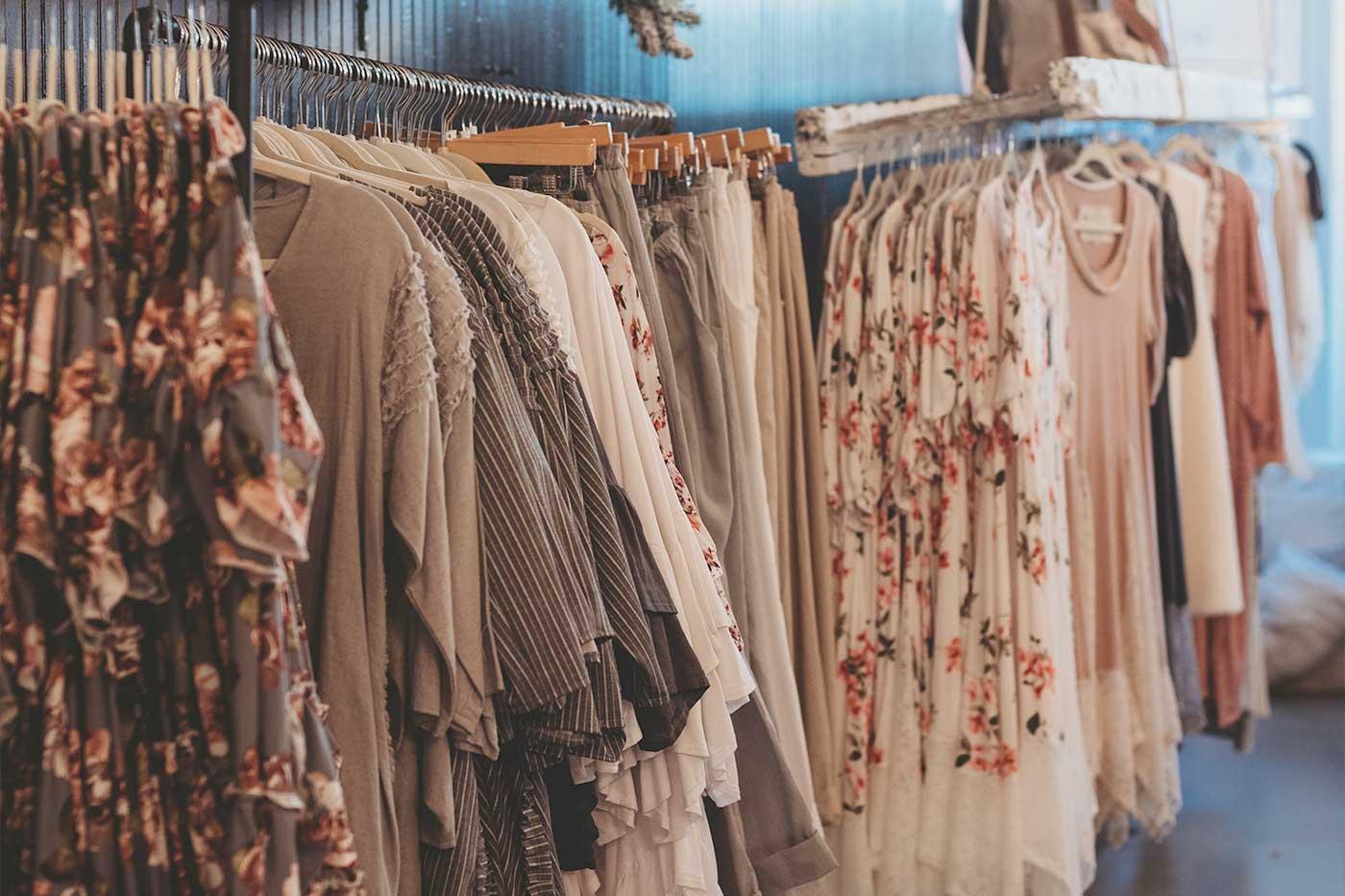The Reason Why Boutique Fashion is the Ultimate Option for One-of-a-kind Style
The Reason Why Boutique Fashion is the Ultimate Option for One-of-a-kind Style
Blog Article
Checking Out the Advancement and Impact of Clothes on Modern Style Trends
The evolution of garments has dramatically influenced contemporary style fads, merging historical criteria with sophisticated developments. Famous numbers like Coco Chanel and Yves Saint Laurent changed the garment industry by introducing ideas that focus on convenience and access, which remain to resonate today. On the other hand, technical strides in locations such as 3D printing and clever fabrics are redefining layout opportunities and customer experiences. Additionally, the growing emphasis on inclusivity and sustainability is reshaping industry standards. As we consider these multifaceted influences, one must question how these elements collectively redefine style's duty in mirroring and forming modern society.
Historic Fashion Influencers
In the tapestry of fashion background, particular numbers have left an enduring mark, forming the patterns and styles that specify whole eras. Coco Chanel, an innovative developer, redefined ladies's fashion by presenting comfy, stylish clothing that left from restrictive bodices. Her famous Chanel fit and little black dress have actually ended up being timeless staples in closets worldwide. Similarly, Christian Dior's post-war "New Look" in 1947, with its party of femininity via complete skirts and cinched waists, noted a return to luxury and has remained to influence developers.
Elsa Schiaparelli is one more crucial figure, renowned for her avant-garde styles that incorporated surrealist art, working together with Salvador Dalí to develop whimsical pieces that tested standard appearances. Her innovative use shade and bold patterns reverberates in modern style. Yves Saint Laurent, meanwhile, democratized haute couture with prêt-à-porter collections, bringing path styles to the masses and setting a precedent for modern-day ready-to-wear lines.
These dreamers, to name a few, not only reinvented style in their times yet also set withstanding fads that reverberate in today's apparel industry, offering a foundation whereupon modern-day developers proceed to build and innovate. Their traditions highlight the value of creative thinking and bold in vogue's ever-evolving story.
Technological Advancements in vogue
Amidst the dynamic landscape of the apparel industry, technological developments stand at the leading edge of development, reshaping exactly how designers create and consumers engage with fashion. The integration of 3D printing has actually revolutionized layout procedures, making it possible for developers to explore intricate frameworks and sustainable materials that were previously impossible. This modern technology promotes quick prototyping, minimizing waste and accelerating production times.

Smart fabrics, embedding innovation right into materials, are additionally transforming the market. Advancements like temperature-regulating and self-cleaning fabrics provide boosted performance and convenience. Wearable technology, integrating attributes like physical fitness monitoring and interaction, adds a new measurement to style, merging aesthetic appeals with usefulness.
Social Changes and Design
As technological developments continue to reshape the garment industry, social changes are just as significant, redefining design and customer choices. Over the last few years, the surge of social media sites systems has actually increased the circulation of international style fads, permitting varied social influences to assemble and exist together. This digital interconnectivity has facilitated the quick exchange of concepts, causing an extra diverse and inclusive analysis of design that shows the multifaceted nature of modern society.
Social recognition and recognition have prompted developers to attract motivation from a broader range of historical and ethnic contexts, incorporating typical themes with contemporary visual appeals. This fusion has actually led to fashion that reverberates with a larger audience, advertising a sense of identification and belonging throughout different demographics. In addition, the boosting demand for customization has driven brand names to use customizable alternatives, allowing consumers to share individuality while mirroring their cultural heritage.
Moreover, moving societal worths have influenced fashion, with inclusivity and variety becoming main themes. The sector has started to embrace designs and influencers of various body kinds, ethnicities, and gender identifications, difficult standard charm criteria. This change emphasizes the power of cultural shifts fit the future of fashion, as design comes to be a much more genuine expression of personal and collective identity.
Sustainability and Modern Style
While the fashion industry continues to develop, the critical for sustainability has become increasingly urgent, affecting modern-day layout techniques. The surge check my reference of slow-moving style, which stresses top quality over amount, motivates consumers to invest in timeless pieces instead than short-term fads.
Furthermore, modern-day style is characterized by its technology in lessening waste and promoting circularity. This strategy not only minimizes ecological impact yet also boosts the social obligation of style homes.

Future Trends in Fashion

Sustainability will remain to be a driving force in forming future fashion fads. The market is increasingly adopting eco-friendly materials and ethical manufacturing techniques, reacting to a growing customer demand for liable practices. Technologies such as bio-fabricated materials and closed-loop recycling systems are readied to visit the site redefine exactly how apparel is created and eaten, minimizing ecological effect while keeping style and high quality.
Cultural shifts, consisting of the rise of inclusivity and variety, will certainly likewise play an essential role. As society ends up being much more knowledgeable about social issues, fashion is anticipated to come to be a platform for expression and modification. Developers will likely concentrate on producing collections that mirror a broader variety of identifications and experiences, championing representation and access.
Conclusion
The development of clothes considerably Going Here affects modern fashion trends, where historic impacts combine with contemporary styles. This ongoing evolution underscores style's duty as a mirror to social values and technological advancement, recommending a future abundant with advancement and inclusivity.
The development of clothes has dramatically affected contemporary fashion fads, combining historical precedents with sophisticated technologies.In the middle of the dynamic landscape of the style sector, technological advancements stand at the forefront of technology, reshaping how developers produce and consumers involve with fashion.While the style market continues to advance, the critical for sustainability has actually become significantly urgent, affecting contemporary design techniques. As sustainability ends up being ingrained in contemporary design, it leads the way for a much more responsible and aware fashion sector.
The development of apparel considerably impacts contemporary style patterns, where historic influences combine with modern styles.
Report this page